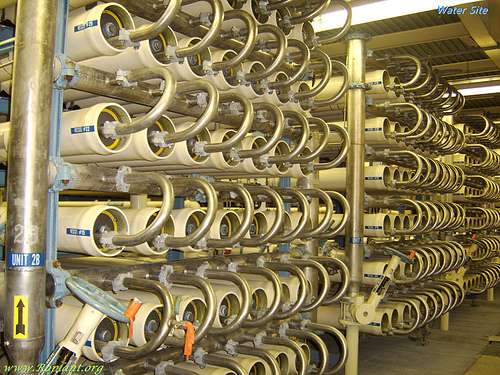Good vibrations slash waste treatment costs

Shake, rattle and roll has slashed costs and reduced waste volumes at the Wanneroo Groundwater Treatment Plant.
The Wanneroo plant is successfully using a vibrating membrane to separate contaminants from its waste stream, producing a recyclable salt solution in the process.
The innovative system, called vibratory shear-enhanced processing (VSEP), relies on shaking and sideways forces to prevent large particles from blocking the membrane surface.
"Normal membrane treatments would clog up really quickly," co-author and Curtin University Associate Professor Anna Heitz says.
"With this system, the contaminants aren't sucked onto the surface of the membrane, there's always this vibration going, agitating the surface."
A/Prof Heitz's team found VSEP reliably trapped 97 per cent of organic contaminants above the membrane, allowing smaller salts to filter through and produce a concentrated salt solution that is re-used upstream.
"Prior to this process, you would just buy new salt," A/Prof Heitz says.
"Now we're recycling: we can separate the salt, reuse that salt, we don't have to throw it away."
Bead cleaning with recycled salt
The plant treats up to 50 per cent of its groundwater using beads of magnetic resin to adsorb naturally occurring contaminants, a process called magnetic ion exchange, or MIEX.
Once loaded with contaminants, these MIEX beads—manufactured in Australia by Aussie company Ixom—are also recyclable.
"You hit the resin beads with this highly concentrated salt solution, more concentrated than sea water, and the contaminants go into the salt solution, so you can reuse the beads," A/Prof Heitz says.
By washing the resin beads with salt solution produced using VSEP, the MIEX plant becomes even more efficient, she says.
"This project was about taking waste from cleaning the resin beads—waste which is really difficult to deal with and expensive to dispose of—and further treating it so you can recycle part of it," A/Prof Heitz says.
"You don't have as much waste, you save on salt costs, you save on tankerage costs."
In the first eight months of VSEP operation, the plant cut its salt costs by 38 per cent, recovering 75–85 per cent of the waste stream volume instead of paying for its disposal.
"You'd be able to use this process to clean up waste from other plants, for example water treatment plants in remote parts of Australia, where you can't discharge brine," A/Prof Heitz says.
More information: "Performance of a vibratory shear membrane filtration system during the treatment of magnetic ion exchange process concentrate," Desalination, Volume 365, 1 June 2015, Pages 196-203, ISSN 0011-9164, dx.doi.org/10.1016/j.desal.2015.02.042
Provided by Science Network WA


















